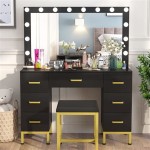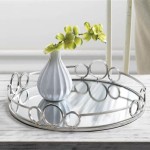Antique Tiger Oak Sideboard With Mirror: A Deep Dive
The antique tiger oak sideboard with mirror stands as a testament to a bygone era of craftsmanship and design. These pieces, popular during the late 19th and early 20th centuries, represent a significant period in furniture history, characterized by a fascination with natural materials and elaborate ornamentation. The "tiger oak" designation refers to a specific cut of oak wood that reveals a distinctive striped or "tiger-like" grain pattern, making each sideboard unique and visually striking. The integrated mirror not only added functionality but also enhanced the aesthetic appeal, reflecting light and creating a sense of spaciousness within a room.
Understanding the historical context and craftsmanship involved in creating these sideboards allows for a greater appreciation of their value and enduring beauty. From the selection of premium oak to the meticulous carving and finishing processes, these pieces were built to last and to serve as focal points within the home. This article will explore the key characteristics, historical significance, value considerations, and preservation of antique tiger oak sideboards with mirrors.
Key Characteristics of Tiger Oak Sideboards
Several defining characteristics distinguish tiger oak sideboards from other types of antique furniture. Identifying these features is critical for both collectors and those seeking to preserve a family heirloom. These elements encompass the wood type, the distinctive grain pattern, the design motifs, and the presence and style of the mirror itself.
The primary material, tiger oak, is not a specific species of oak but rather a particular sawing method. Quarter-sawing the oak log produces a grain pattern perpendicular to the tree's growth rings. This technique reveals the medullary rays, which appear as shimmering flakes or stripes, giving the wood its "tiger" or "quartered" appearance. The wood is exceptionally durable and resistant to warping, contributing to the longevity of these sideboards. The color typically ranges from a light golden hue to a deeper amber, which can darken with age and the application of various finishing techniques.
The design of these sideboards often incorporates elaborate carvings, including floral motifs, classical elements such as columns and pilasters, and geometric patterns. The hardware, such as drawer pulls and hinges, is usually made of brass or bronze and is often intricately designed as well. The size and configuration of the sideboard can vary, with some featuring multiple drawers and cabinets for storage, while others may have specific compartments for serving dishes or storing linens. The base of the sideboard is typically supported by sturdy legs, often carved or turned, adding to the overall sense of solidity and grandeur.
The mirror is a crucial element of these sideboards, often serving as the visual centerpiece. The mirror's style can vary depending on the period and regional influences. Some mirrors are rectangular with bevelled edges, while others are more ornate, featuring curved tops and decorative frames. The frame itself may be carved from tiger oak or another complementary wood and often echoes the design motifs found on the sideboard's base. The size of the mirror is also a factor, with some sideboards having large, imposing mirrors that dominate the upper portion of the piece, while others have smaller, more subtle mirrors that blend seamlessly with the overall design.
Historical Significance and Context
The popularity of tiger oak furniture peaked in the late 19th and early 20th centuries, a period marked by significant industrial growth and a burgeoning middle class. Mass production techniques made furniture more accessible, but there was still a strong desire for quality and craftsmanship. Tiger oak sideboards represented a blend of affordability and elegance, appealing to homeowners who wanted to furnish their homes with durable and stylish pieces.
The style of these sideboards was influenced by various design movements, including the Victorian era, the Arts and Crafts movement, and the early phases of Art Deco. Victorian influences are evident in the elaborate ornamentation and the emphasis on grandeur. The Arts and Crafts movement, with its focus on natural materials and handcrafted details, also played a role in shaping the design of tiger oak furniture. Early Art Deco elements, such as geometric patterns and streamlined forms, can also be seen in some later examples of tiger oak sideboards.
These sideboards were often placed in dining rooms, where they served as both functional storage pieces and decorative focal points. They were used to store silverware, china, and linens, and the mirror provided a convenient space for personal grooming or for reflecting light and creating a more inviting atmosphere. The sideboard became a symbol of domestic prosperity and good taste, reflecting the aspirations of the growing middle class.
The decline in the popularity of tiger oak furniture began in the 1930s and 1940s, as changing tastes and economic conditions led to a shift in design preferences. Simpler, more modern styles became fashionable, and mass-produced furniture made from cheaper materials became more common. However, tiger oak sideboards have since experienced a resurgence in popularity among collectors and those who appreciate the quality and craftsmanship of antique furniture.
Value Considerations and Preservation
Determining the value of an antique tiger oak sideboard with a mirror involves considering several factors, including its condition, age, provenance, and rarity. Proper preservation is essential for maintaining its value and ensuring its longevity.
The condition of the sideboard is a primary determinant of its value. Sideboards in excellent condition, with minimal wear and tear, original hardware, and an intact mirror, will command higher prices. Damage such as cracks, chips, stains, or missing hardware can significantly reduce its value. Any previous restoration work should be carefully assessed, as poorly executed repairs can also detract from the overall value.
The age of the sideboard is another important factor. While most tiger oak sideboards date from the late 19th and early 20th centuries, older examples or those with documented provenance may be more valuable. Identifying the maker or the original owner can also increase its worth, particularly if the piece is associated with a significant historical figure or event.
Rarity also plays a crucial role. Sideboards with unique design features, unusual dimensions, or those made by renowned furniture makers are generally more valuable than more common examples. Sideboards with elaborate carvings, unusual hardware, or distinctive mirror designs may be particularly sought after by collectors.
Preserving an antique tiger oak sideboard with a mirror requires careful attention to its environment and routine maintenance. The sideboard should be kept in a stable environment with consistent temperature and humidity levels to prevent warping or cracking. Direct sunlight should be avoided, as it can fade the finish and damage the wood. Regular dusting with a soft cloth is essential for removing surface dirt and grime. More thorough cleaning should be done sparingly, using a mild soap solution and a damp cloth, followed by immediate drying.
The mirror should also be cleaned regularly with a glass cleaner that is safe for antique mirrors. Avoid using harsh chemicals or abrasive cleaners, as these can damage the silvering on the back of the mirror. Inspect the frame regularly for any signs of damage, such as loose joints or cracks, and address these issues promptly to prevent further deterioration.
If the sideboard requires restoration, it is best to consult with a qualified antique furniture restorer. A professional restorer will have the knowledge and skills to repair damage, refinish the wood, and replace missing hardware in a manner that preserves the integrity and value of the piece. Avoid attempting to restore the sideboard yourself unless you have experience in antique furniture restoration, as improper techniques can cause irreversible damage.
By understanding the key characteristics, historical significance, value considerations, and preservation techniques associated with antique tiger oak sideboards with mirrors, owners and collectors can appreciate and protect these remarkable pieces of furniture for generations to come.

Tiger Oak Buffet With Mirror And Shelf Antique Sideboard By Tig

Antique Tiger Oak Buffet Mirror Sideboard Circa Early 1900s

Antique Tiger Oak Sideboard Mirror Back Buffet 1910 B2856 At 1stdibs With

Antique Tiger Oak Carved Sideboard With Mirror

Antique Northwind Furniture Co Tiger Oak Sideboard Buffet W Mirror Carved Face 1 800 00 Rustic Tile

Antique Quartersawn Tiger Oak Sideboard Buffet Beveled Mirror Backsplash 128475 Black Rock Galleries

Antique Tiger Oak Sideboard Artscrafts Mirror Back American 1915 H114

Gorgeous Early American Tiger Oak Sideboard Beautiful Condition With Mirrored Back And Claw Feet A Stea Antique Furniture Victorian

Antique Circa 1900 Victorian Era Tiger Oak Empire Style Sideboard Chairish

Antique Sideboard Bar Tiger Oak Furniture








